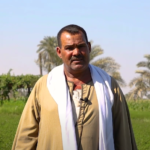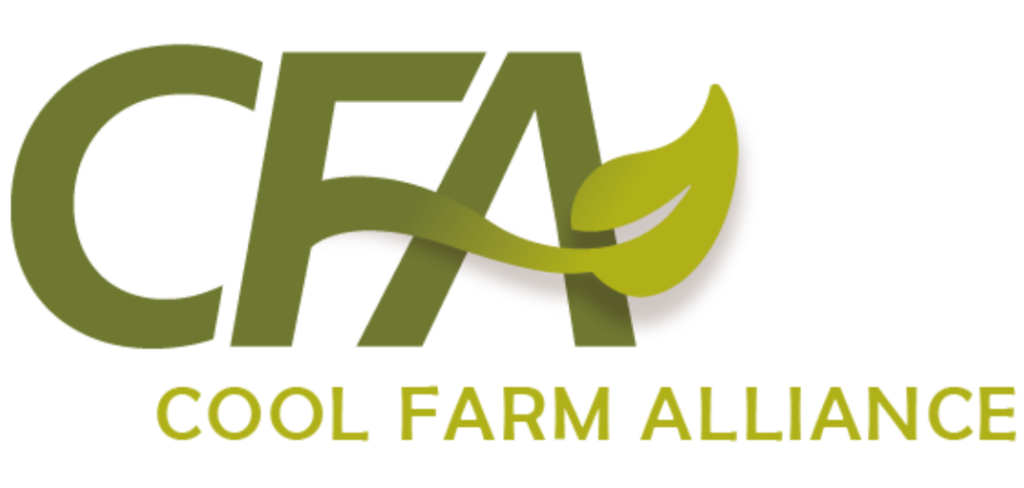Traceback your fabric
and explore your
impact on the people
and the environment

Creating a
FAIR ECONOMY
$ 1900
per ha is earned by the farmer to cover the farming costs and promote a fair compensation.
Creating a
FAIR SOCIETY
40%
of NatureTex employees are female. The aim is to reach a 50% female share in order to promote gender equality.
Life Long Learning &
WELLBEING
30
female employees of NatureTex participated in women leadership training to promote women empowerment.
Protecting the
ENVIRONMENT
30.5%
water was saved by using biodynamic, regenerative methods compared to conventional cotton cultivation.
Value Chain of the Sheet
Check out the process this sheet goes through to get to you!

Farming
The woven/knitted fabric comes from the variety Giza 95cotton flower. This specific kind of cotton is special for Egypt and is cultivated in Fayoum, a city located southwest of Cairo. This high-quality long-staple cotton was cultivated using a holistic and regenerative approach called biodynamic agriculture.
During the cultivation of the cotton, no synthetic pesticide or fertilizers were used. This way, the farmer preserves the biodiversity of the soil and surrounding and protects the water and air from pollution.
EoL certified cotton is sold at a higher price to ensure that the farmers’ economic situation improves and that the farmers become more self-sufficient to support the development of their community.
Economy of Love provides its farmers consultancy and information about regenerative, biodynamic agriculture to increase skills and technical knowledge.
Meet the Farmers

Get to the Source of Production

Ashry Sakaran
Farmer in Fayoum, Egypt
Ashry Sakaran grows Demeter-certified biodynamic cotton, along with other crops, in Fayoum in southwest of Cairo. He started to believe in the importance of biodynamic agriculture after noticing a difference in health and wellbeing since his conversion from conventional agriculture.

Ahmed Tawfik
Farmer in Fayoum, Egypt
Ahmed Tawfik has his own Demeter-certified biodynamic farmland in Fayoum, where he grows cotton, also Giza 95. His father has been working with SEKEM for 30 years and grew up with biodynamic agricultural methods. He seeks to further develop, biodynamic agriculture in his surrounding area.

Gomaa Hassan
Farmer in Fayoum, Egypt
Gomaa Hassan has his own Demeter-certified biodynamic farmland in Fayoum, where he grows cotton, Giza 95, along with other crops. He’s been working with SEKEM for 24 years. Gomaa believes in the importance of biodynamic farming, as it doubles the production and protects his family’s health as well as his own.

Mahmoud Rabiea
Farmer in Fayoum, Egypt
Mahmoud Rabiea also has his own Demeter-certified biodynamic farmland in Fayoum, southwest of Cairo. Along with other crops, he grows Cotton Giza 95. The weather in Fayoum is especially suitable for this kind of Giza.
Processing
(Ginning and Spinning)
Following the principle of a circular farm organism, the cotton seeds are returned to the farm, where the cotton was initially cultivated, to be reused; for the upcoming season. Seeds that are not reused on the farm are used for cottonseed oil or animal fodder.
The spinning of the cotton is outsourced to a company located in Sadat city, in the northwest of Cairo.
In addition to the environmental criteria, fair treatment and well-being in the supplying companies are guaranteed through the Economy of Love Code of Conduct and the social criteria of the GOTS certification.
Processing
(Dyeing and Finishing)
Moving on to the next step, the yarn either goes through knitting or weaving processes. The woven or knitted cotton then goes on to the dyeing and finishing processes.
Dyes are often done through harmful chemicals that are bad for the skin and the environment. The Demeter and GOTS certifications ensure that the inputs being used in the processes of dying and finishing are Eco-friendly, biodegradable, and non-hazardous, with no toxins included.
The dyeing facility located near Cairo abides by the most stringent legal requirements for the treatment of wastewater before its disposal.
Factory workers work in safe conditions, methods that may endanger the health and safety of the workers are prohibited.
Processing
Back in NatureTex, the woven or knitted fabric gets sample tested to make sure that the quality is according to the standards. Afterwards, the fabrics are stored in the warehouse, ready for distribution.
To ensure that none of the cotton is wasted, NatureTex reuses its leftover stock fabric to turn them into carpets. The organic cotton fiber waste from the spinning process is used as doll stuffing. As for the waste fabric from the cutting process, it is sold to be recycled.
NatureTex aims for a diverse environment where everybody is equal. The company provides working opportunities for people with intellectual disabilities, which gives them a chance to be more independent and to contribute to their family income and community values.
NatureTex factory has implemented the Core Program which allows all factory employees to engage in courses of art, acting, music, origami, and many more to promote happiness and balance at work.
Packaging Material
The woven and knitted fabric rolls are now individually packaged and are ready to be shipped and distributed to customers. Packaging materials have a huge impact on the products’ lifetime impact and cannot be neglected.
The fabrics are packed in poly bags, which are made from recyclable material.
The manufacturing and transportation of packaging materials are accounted for in the calculation of the product’s emissions. The company is actively working on reducing them.
As part of SEKEM holding, NatureTex is involved in tree planting and was, therefore, able to sequester more CO2 than its emissions and thus continued to be carbon positive in 2020 and 2021.
Distribution
The woven and knitted fabrics are now ready for distribution. They are transported by trucks to different local customers or ports to be shipped to international clients.
The supply chains transportation emissions are monitored by the sustainability department of the SEKEM Holding. The data includes all the transportation required starting from the farm till it reaches the local/international retailers’ shelves.
NatureTex mainly uses sea freight for international shipments; to reduce emissions and to have the least possible overall impact on the environment.
As part of SEKEM holding, NatureTex fully offsets its carbon emissions for transportation.
Meet the Employees

The people who processed, packaged and distributed your product
Vivian
Merchandiser in NatureTex
Vivan has been working in the merchandising department in NatureTex for 8 years. She is very passionate about the field and hopes to continue doing it for as long as she can.
Jing
Quality and Production Engineer
Jing has been a quality supervisor at NatureTex for 14 years. She came to Egypt from the Philippines and stayed as she grew attached to her team, who became like family to her.
Yassmin
Packaging and Labeling Assistant
Yassmin lives in Galvina with her family. She was a student at SEKEM vocational schools and has been a NatureTex employee for 13 years.
Galal
Warehouse Worker
Galal lives with his family in Galvina. He has been working in NatureTex for 20 years and believes that the Core Program is important for happiness at work.
What is the True Price?

Are there hidden costs that the price doesn't reflect?

True Price Comparision
Sustainably and ethically produced products add value to society and the environment. However, when comparing prices, we don’t take into account the long-term and externalized impact of the products we purchase.
For example, we know that this biodynamic cotton emits greenhouse gases – such as Co2-eq, costing society up to 0.042 USD/kg, and about 0.37 tonnes Co2-eq per tonne of cotton. However, compared to conventional methods, this biodynamic cotton cultivation produces 75% less Co2-eq.
We encourage you to compare products based on their true price; the price that reflects the hidden costs that we and future generations eventually pay for.


This cultivation of cotton costs up to 0.042 USD/Kilo, by emitting carbon into the atmosphere
What is the Water Footprint on the Farm?
How much water was used to produce my product?

By looking at a product’s water footprint, you can assess the amount of water used throughout the production process, from the farm until it becomes fabric. That way you can make an informed decision based on the product’s impact on water resources.
3050 liters per kg were used to cultivate the raw cotton.
Around 30.5% less water compared to conventional cultivation methods in the same region.
Since some countries have fewer water resources than others, it’s not only important to know how much, but also, where it comes from to appropriately measure your impact on those resources.

The Water Footprint of cultivating the
cotton for this fabric is
3050 liters/kg
Examples of Hidden Costs
Costs that are not reflected on the price tag, but are eventually paid by society

WATER
REPROCESSING COST
Society is paying taxes to clean water sources from agriculture’s chemical fertilizers, pesticides and herbicides, as well as the irresponsible disposal of wastewater from factories, in order to make it usable/drinkable water.

HEALTH COSTS
Society has to bear the long-term cost caused by disruptive agriculture e.g. soil erosion, desertification, loss of biodiversity.

ENVIRONMENTAL
DAMAGE
Society has to bear the long-term cost caused by disruptive agriculture e.g. soil erosion, desertification, loss of biodiversity.
Locations
Check out the locations of all the farms, companies who were involved in making this product!
discover the origin of your product
Eraky Farm
Add an optional description to your map pin economyoflove
Mashour Farm
Add an optional description to your map pin economyoflove
Abo Hamad
Add an optional description to your map pin economyoflove
Mahmoud Rabie farm
Add an optional description to your map pin economyoflove
We hope this information helped you Choose Your Impact and make mindful purchasing decisions that leave a positive impact on people and the environment!
Interested to know more about the companies above? Click here to download the SEKEM Sustainability Report













